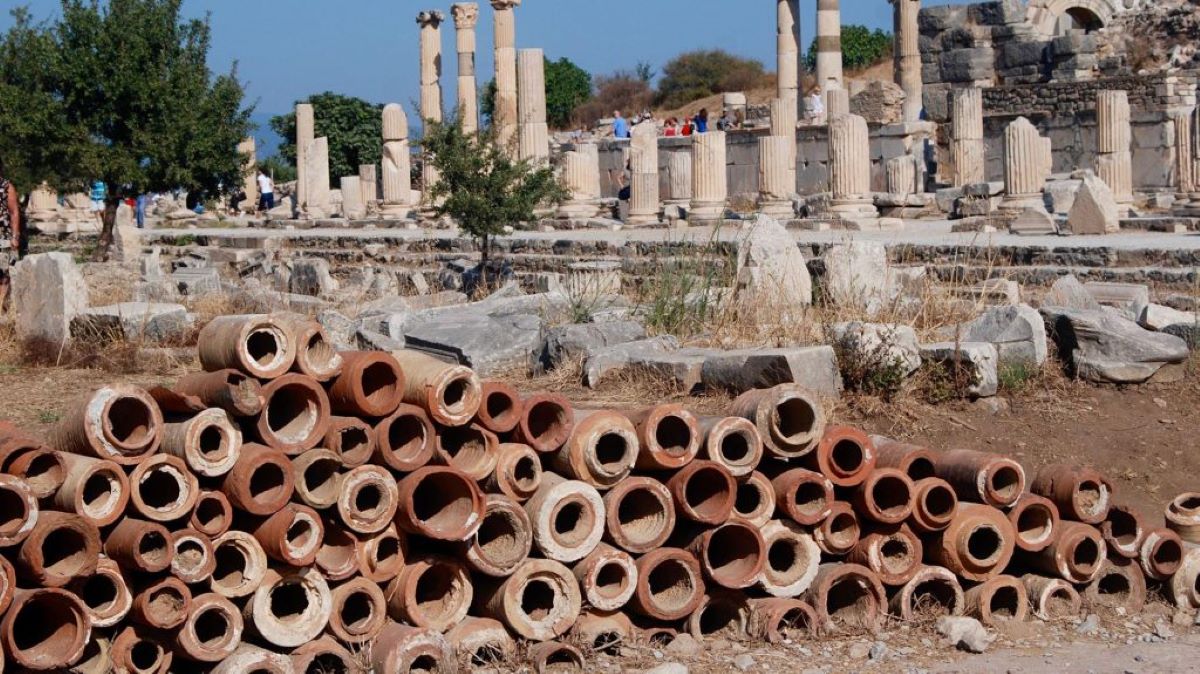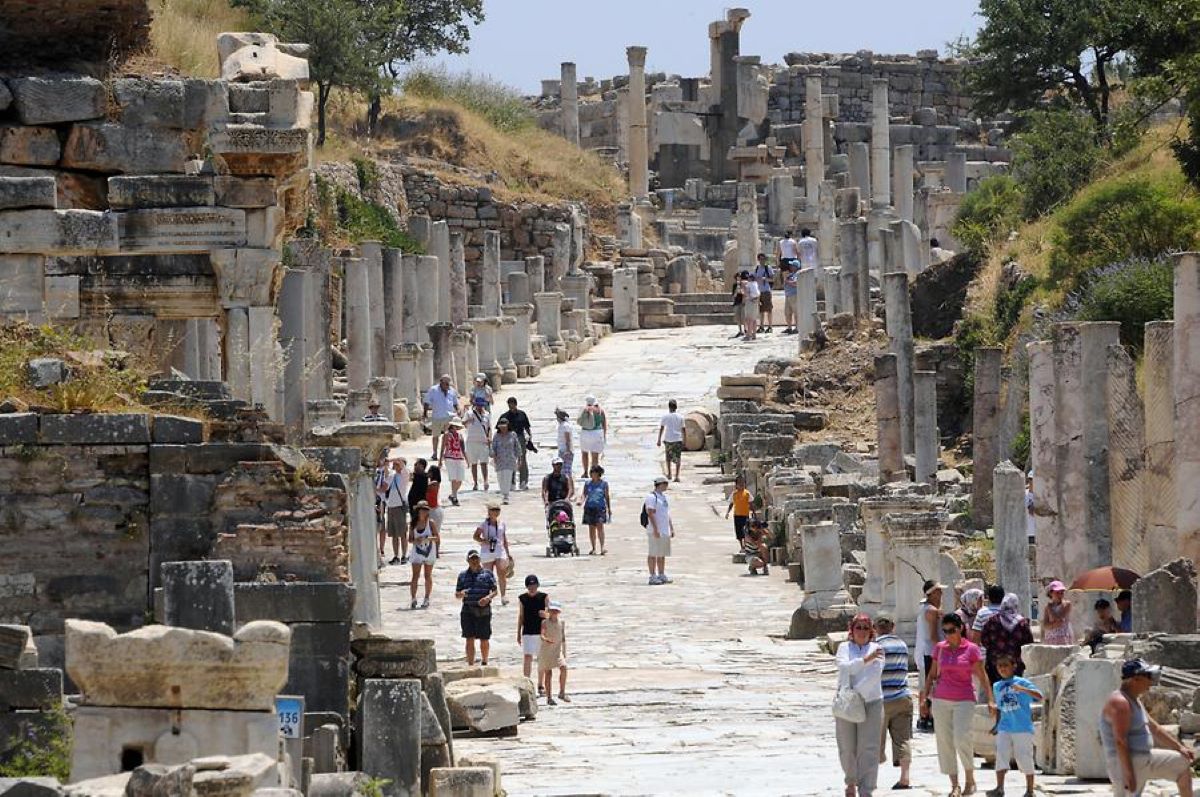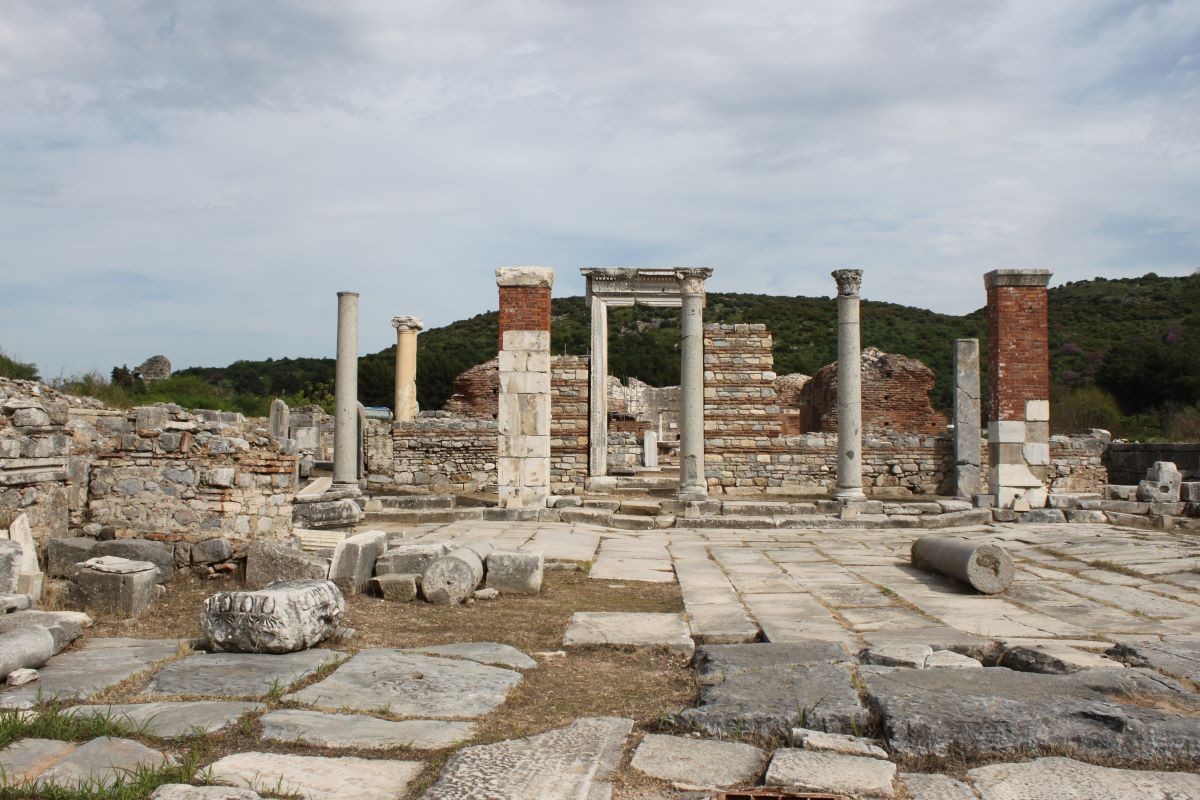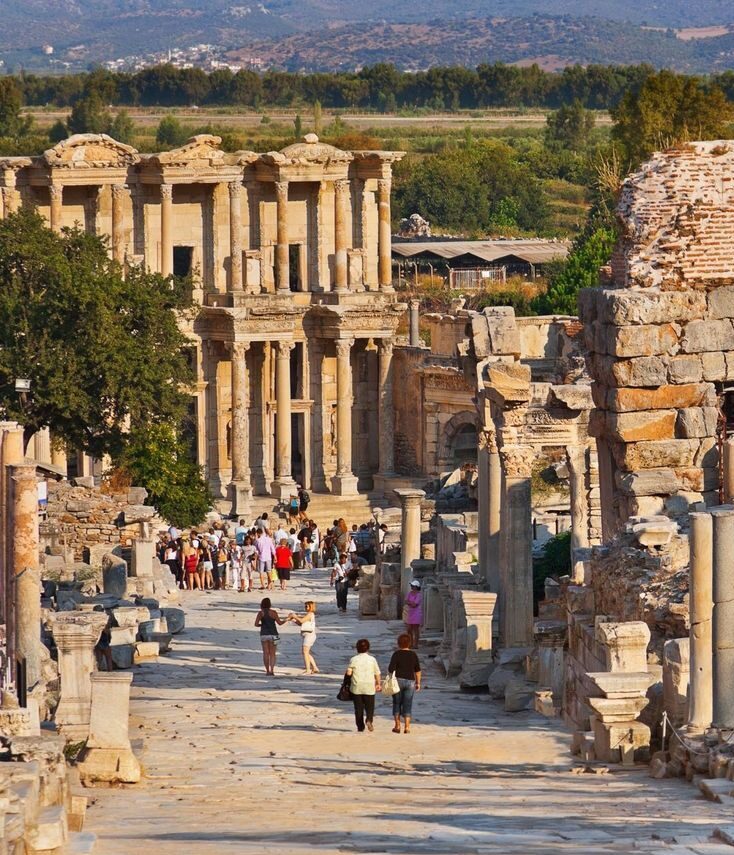The ancient city of Ephesus is a site of remarkable historical significance, with a…

Engineering Marvels of Ephesus: Aqueducts, Sewers, and Impressive Public Works of the Roman Era

Ephesus is known for its rich history and remarkable engineering achievements. During the Roman era, Ephesus was a prominent city in the Roman Empire, and its engineering wonders, including aqueducts, sewers, and other impressive public works, continue to fascinate us today.
Aqueducts in Ephesus
One of the outstanding engineering feats of Ephesus was its aqueduct system. Aqueducts were used to transport water from distant sources to the city, supplying water for various purposes such as drinking, bathing, and irrigation. The aqueducts in Ephesus were built with impressive scale, design, and construction techniques.
To overcome the challenging terrain, the Romans constructed aqueducts with elevated arches that spanned valleys and crossed rivers. One of the most famous aqueducts in Ephesus, known as the “Pollio Aqueduct,” was over 10 kilometers long and delivered water from the Marnas River to the city. The aqueduct had multiple levels of arches, reaching a height of up to 30 meters in some places, showcasing the advanced engineering skills of the Roman era.
The aqueducts in Ephesus were constructed using a combination of stone and brick materials. The stone arches provided structural stability, while the brick channels carried the water. The aqueducts also featured tunnels, bridges, and reservoirs, which helped regulate the flow of water and ensure a steady supply to the city.
The impact of the aqueducts on the daily life of Ephesian citizens was significant. The reliable supply of water enabled the growth and development of the city, supporting its population and economy. Water was used for various purposes, including public fountains, baths, and private households. The aqueducts of Ephesus were a marvel of Roman engineering, showcasing the ingenuity and expertise of ancient engineers.
Sewers in Ephesus
Another notable engineering accomplishment of Ephesus was its advanced sewer system. The Romans constructed an elaborate network of sewers that effectively managed wastewater and sewage, contributing to the sanitation and hygiene of the city.
The sewer system in Ephesus was designed with innovative features such as covered channels, vaulted ceilings, and manholes. The covered channels, made of stone or brick, were built underground and had a gentle slope to allow for the flow of wastewater. The vaulted ceilings provided structural stability, and the manholes allowed for maintenance and access to the sewers.
The sewer system played a crucial role in improving public health and the quality of life for the inhabitants of Ephesus. It helped prevent the contamination of water sources and reduced the risk of diseases caused by poor sanitation. The sophisticated sewer system of Ephesus was a testament to the advanced engineering skills of the Roman era, highlighting their understanding of the importance of sanitation and hygiene in urban planning.
Impressive Public Works in Ephesus
In addition to aqueducts and sewers, Ephesus was also home to other notable public works that showcased impressive engineering achievements. One such example is the Celsus Library, a grand Roman library considered one of the most beautiful buildings of the ancient world. The library was designed with intricate architectural details, including a two-story facade adorned with statues, and it housed thousands of scrolls, serving as a center for knowledge and education in Ephesus.
The Great Theatre of Ephesus was another remarkable public work that demonstrated the engineering prowess of the Roman era. It was one of the largest theaters in the ancient world, with a seating capacity of over 25,000 people. The theater was designed with advanced acoustics, allowing for excellent sound distribution, and it became a hub for various performances and events, showcasing the Roman’s expertise in theater construction.
Furthermore, the Temple of Artemis, also known as the Artemision, was a monumental temple in Ephesus that was considered one of the Seven Wonders of the Ancient World. The temple was a marvel of engineering, with its grand size, elaborate decorations, and sophisticated architectural design. The temple stood approximately 55 meters tall, supported by 127 marble columns, and it was an important religious and cultural center in Ephesus.
The Roman engineers of Ephesus utilized innovative construction techniques and materials, such as marble, limestone, and concrete, to create these impressive public works. Their understanding of architecture, mathematics, and engineering principles allowed them to design and construct these structures with precision and durability, leaving a lasting legacy that still amazes us today.
The engineering wonders of Ephesus, including aqueducts, sewers, and other public works, are a testament to the remarkable engineering skills of the Roman era. These impressive achievements not only provided practical solutions for the city’s water supply, sanitation, and infrastructure needs but also contributed to the development and growth of Ephesus as a thriving city in the Roman Empire.
The aqueducts delivered water to the city, the sewer system ensured sanitation and hygiene, and the grand public works like the Celsus Library, the Great Theatre, and the Temple of Artemis showcased the Roman’s advanced engineering expertise and their commitment to innovation and progress.
Today, these engineering wonders stand as a testimony to the ingenuity and engineering prowess of the Roman civilization and continue to inspire awe and admiration among historians, archaeologists, and engineering enthusiasts alike. The engineering wonders of Ephesus are a testament to the enduring legacy of Roman engineering and their impact on the development of ancient cities. Ephesus stands as a remarkable example of the engineering marvels of the Roman era and a significant contribution to human civilization’s engineering and architectural heritage.
In conclusion, the engineering wonders of Ephesus, including aqueducts, sewers, and other impressive public works, are a testament to the remarkable skills and expertise of the Roman engineers of that era. These engineering achievements played a crucial role in the development and growth of Ephesus as a thriving city in the Roman Empire, and their impact on the daily life of its inhabitants cannot be overstated. Today, these engineering wonders continue to awe and inspire us, serving as a reminder of the ingenuity and innovation of ancient civilizations and their lasting contributions to human civilization’s engineering and architectural heritage.




This Post Has 0 Comments